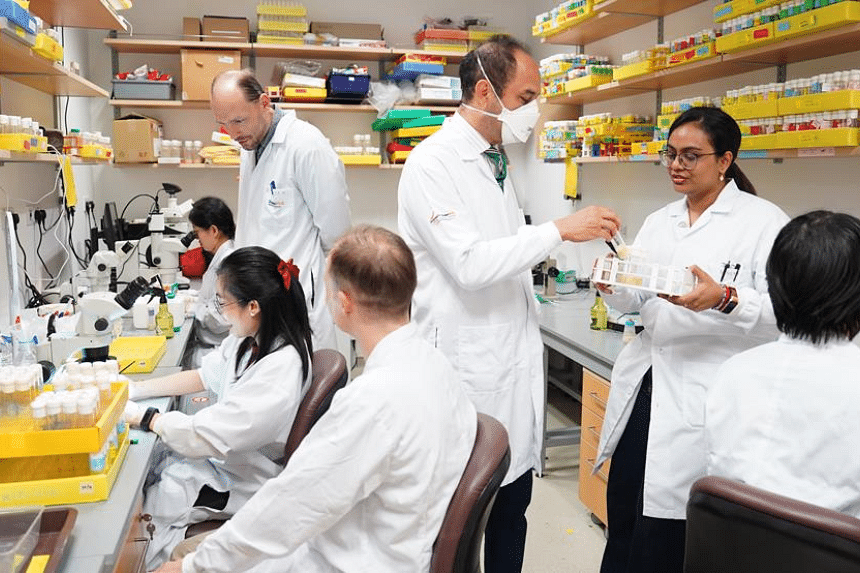SINGAPORE – Researchers from Duke-NUS Medical School have discovered that a new class of light-sensitive proteins can be used to efficiently turn off brain cells with light, offering scientists a more effective tool to study the brain.
The study, which was published in multidisciplinary journal Nature Communications in April, paves the way for scientists to better understand the brain circuits underlying neurodegenerative and psychiatric disorders such as Parkinson’s disease and depression.
The research team showed that specific potassium-ion channels can be triggered by light to inhibit brain-cell activity in fish, worms and flies.
“These potassium-ion channels act like gates on cell membranes. When exposed to light, these gates open and let potassium ions flow through, helping to quiet the activity in the brain cells,” said Dr Stanislav Ott, the first author of the study.
“This offers us new insights into how brain activities are regulated,” added Dr Ott, a senior research fellow at the Duke-NUS Neuroscience and Behavioural Disorders Programme.
Potassium ions are critical for cellular processes such as nerve-impulse transmission, muscle contraction, and cellular-fluid balance maintenance.
Light has been used in neuroscience studies ever since a technique called optogenetics was first demonstrated in 2002.
This involves genetically inserting light-sensitive proteins such as ion channels into cells, such as brain neurons. Scientists can then use light to stimulate or silence the cells’ electrical activity, allowing them to manipulate brain circuits.
There are currently two common types of light-sensitive proteins that can be thought of as switches: sodium-ion channels, and chloride-ion channels, said Associate Professor Adam Claridge-Chang, the senior author of this study.
But these tools have their limitations.
Sodium-ion channels activate brain activity. But this is not as easily interpretable as removing neuronal activity, said Prof Claridge-Chang, who is also from the Duke-NUS Neuroscience and Behavioural Disorders Programme.
“From a geneticist’s point of view, removing function is more informative. So, there was always a push for an inhibitor, and better inhibitors.”
Meanwhile, chloride-ion channels can inhibit brain activity, but sometimes also activate it.
Prof Claridge-Chang said: “We’ve developed other light-activated ‘remote-control switches’ previously, but we’ve found these new potassium channels to be even more versatile, providing a very useful way to study how the brain works.”
It allows researchers to better study how different brain regions function and interact.

